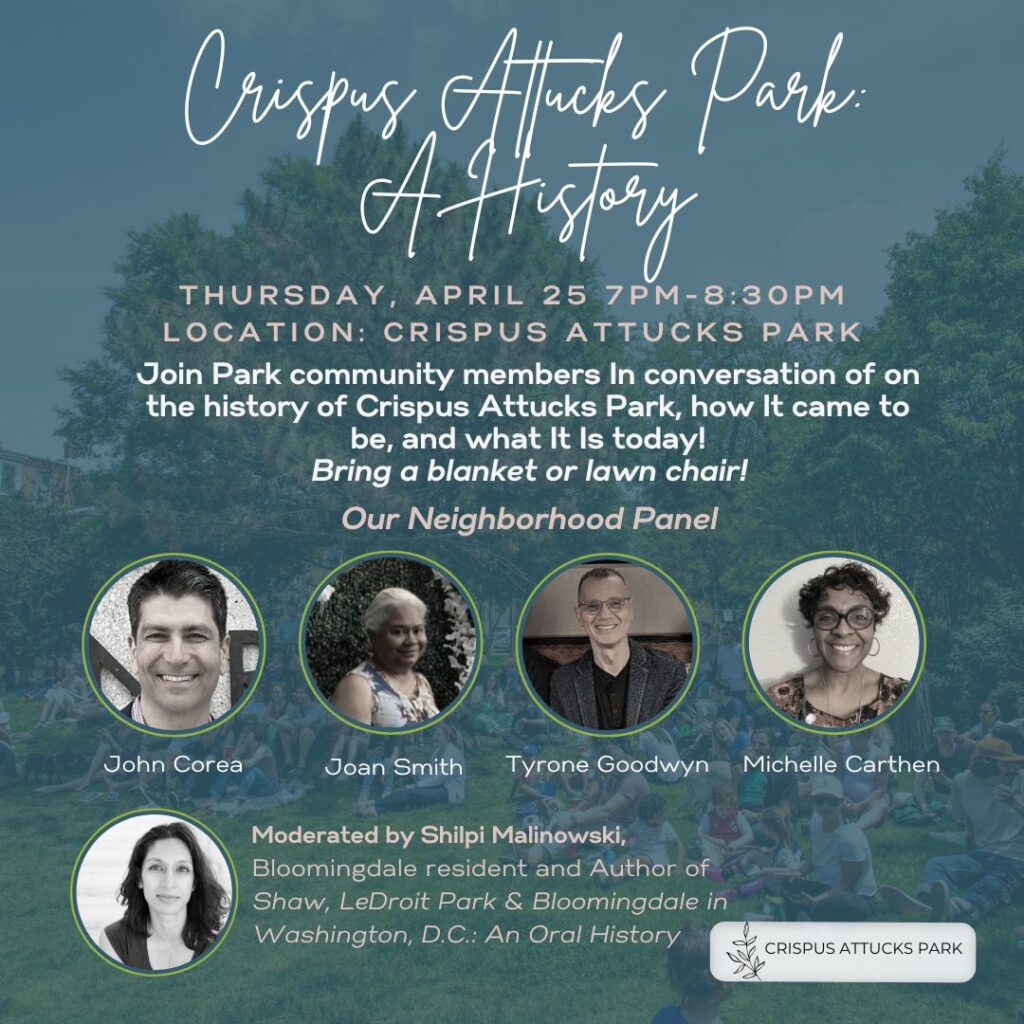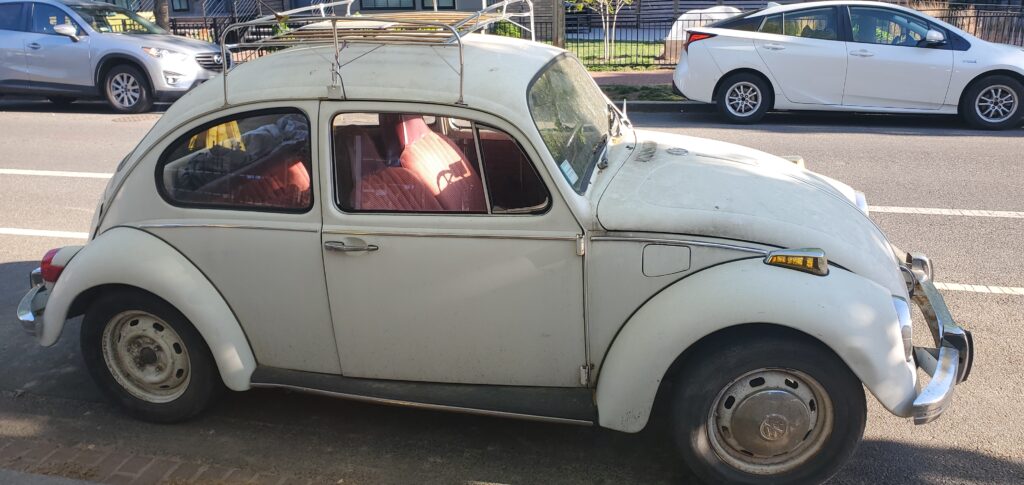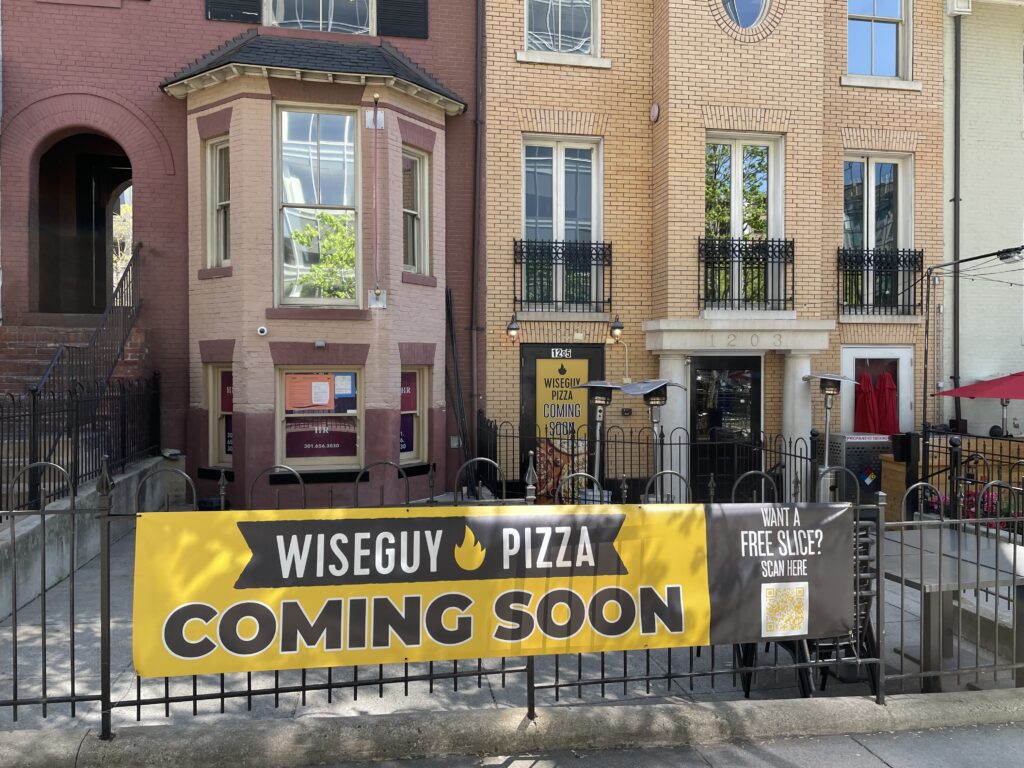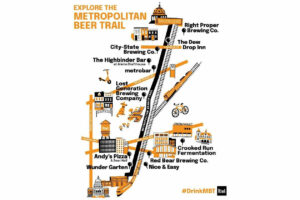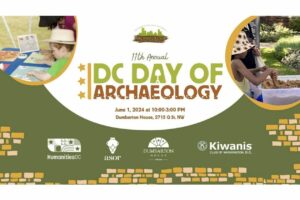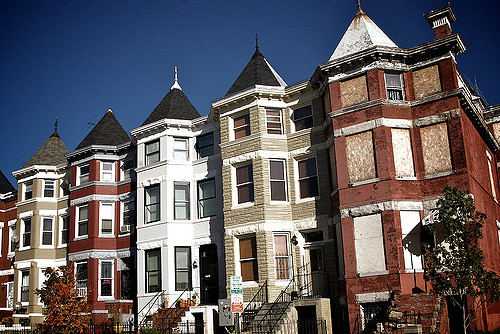
Photo by PoPville flickr user Tyler Nelson
“Dear PoPville,
Wanted to bring your attention to a petition some fellow Bloomingdale neighbors and I put together to weigh in on our neighborhood’s debate about historic designation.
The neighborhood has heard some from supporters of the application, but there hasn’t yet been a group representing those who are concerned about the impacts designation will have. We’re worried this application will be voted on before the majority of the neighborhood has a chance to survey the arguments on each side and weigh in..
The petition can be found here.
I’ve outlined my reasons for opposing designation here:
This summer, a group of Bloomingdale residents applied to designate our neighborhood as a historic district under DC law.
If the application is accepted by the Historic Preservation Review Board (HPRB), new construction and exterior alterations to all properties in Bloomingdale will be subject to a historic preservation review to determine if they are consistent with the character of the neighborhood.
If you aren’t familiar with the details, this effort may sound like a good one. With a policy proposal of this magnitude, however, we need to weigh the impact it will have on the community at large. I’m in favor of celebrating and preserving DC’s history, but attempting to do so by creating a historic district will come at a cost.
A historic district will inevitably add costs
Bloomingdale homeowners who want to make changes to the exterior of their homes could see that process become more (potentially much more) expensive and time-consuming. That in turn could lead to higher prices for renters as well.
The cost starts in the design phase. One neighborhood architect testified at a recent meeting that he charges multiple thousands of dollars more when he works on projects in historic districts, in anticipation of the extra meetings and revisions he has learned to expect.
Then comes the cost of the materials. All revisions must be made using approved lists of materials – many of which are significantly more expensive than similar alternatives.
The final cost is time and hassle. Not only do building permits require an extra level of review for historic compatibility (requiring an in-person trip on a weekday), preparing for that review necessitates more research, often including consulting with Historic Preservation Office (HPO) staff in advance of the actual application. If the alterations are of significant enough scope, that escalates into a full hearing in front of the HPRB, which only meets monthly. Any rounds of revisions, therefore, can mean a multi-month delay.
The impact of these added costs — particularly on lower income residents — is one of the main reasons our next-door neighbors in Eckington decided against applying for historic designation last year. As one neighbor testified at the Eckington Civic Association meeting where residents voted against moving forward with the process:
My conclusion is that [historic designation is] overtly anti-poor. Anything that increases cost even slightly, pushes them out of neighborhood. [I] understand [the] need to preserve heritage, but part of what makes neighborhood is diversity of ethnicity and income. [I] want to see that stay, that’s part of why we love the neighborhood.
Proponents of preservation spend a lot of time assuring residents that most alterations are minor and get approved quickly. They also emphasize that the Historic Preservation Office is making an effort to add less-expensive materials to the approved lists. Those are good steps, but they don’t cover all use cases. It’s the more complex cases that present the greatest potential for homeowners to get stuck with significant hassle and costs.
Proponents also enthusiastically draw attention to a city-sponsored fund (the Historic Homeowner Grant Program) that helps subsidize the costs for low- and moderate-income residents. However, this competitive fund only helps 10-15 people citywide per year, and is only available to residents in some of the historic districts. Bloomingdale would not automatically be added to this list; the neighborhood would have to go through a separate legislative process after historic designation to attempt to qualify.
This isn’t the only way to preserve history
History is important — who doesn’t want to preserve it? I certainly do. As the research in the application highlights, Bloomingdale has an extensive, interesting history that makes me appreciate living here even more. The application tracks the neighborhood’s significant people, places and events — like the lawsuits against racial covenants on Bloomingdale houses that eventually became a part of the landmark Supreme Court case finding such covenants unenforceable. With stories like these, the document makes an excellent case that Bloomingdale has an invaluable history that should be appreciated and preserved.
However, historic designation is a very clunky tool to try to achieve this goal. Architectural facades are one visual reminder of history, but they’re far from the only or most important aspect. Research and scholarship, markers and monuments, tours and lectures — all of these help us appreciate and learn from the past. The self-guided walking tour recently installed in the neighborhood is a fantastic example of the ways we can preserve and promote our local history.
And yet, that doesn’t mean we can’t protect buildings too! The great news is, there’s already a process for doing so. Preservation advocates will continue to be free to nominate buildings of special historic and architectural significance. We don’t need a neighborhood-wide historic district to preserve important locations and great examples of what makes this neighborhood notable.
If preserving history is your goal, we’re pretty well covered. Insisting that we actually need a blanket rule covering 1,692 properties in the neighborhood is something of a drastic measure — one, it seems to me, that offers little added gain.
This is more about looks than history
The key to understanding why advocates believe they need such a blunt tool is to look past the nominal talk about history. From the arguments I’ve seen put forward by supporters of the application, most are motivated — at least in part — by a desire to stop the dreaded “pop-ups” (houses with additions that raise them higher than the roofline of their neighbors). Pointing to some of the infamous examples around the city, they suggest the choice is historic designation or a proliferation of these egregious eyesores.
However, that ignores the fact that anti-pop-up advocates already won a major victory in the city two years ago when they persuaded the Zoning Commission to adopt stricter rules in rowhouse neighborhoods like Bloomingdale. The allowed height was lowered from 40ft to 35ft, the number of residential stories limited to three, and the number of allowable units a home can be converted into limited to two. The scope of pop-ups allowable without needing special permission has already been significantly curtailed.
Other proponents of designation go even further to say they are aiming to protect the streetscapes of the neighborhood. They assert that visually uniform blocks are a collective good for which homeowners should be required to sacrifice their rights to make the changes they want to their own houses.
I don’t mean to be glib. Based on the seriousness of the testimonies given by some of the application sponsors at a recent neighborhood forum, I can tell that they are genuinely and deeply upset about visual changes in the neighborhood. They described how Bloomingdale has become “unrecognizable” because of the “desecration” that’s happened to some houses that have been renovated; one went so far as to say it’s nothing short of “architectural rape.”
Hearing their experiences helped me understand why they feel so passionately about supporting this application. But it hasn’t yet persuaded me that those concerns from a handful of neighbors are worth burdening everyone in the neighborhood with more hassle and cost.
Asking neighbors to sacrifice their right to fit their homes to their own families’ needs and preferences is a big request in its own right. But asking them to incur extra cost, time and hassle as well is a particularly severe one — especially when so many neighbors are already feeling the pinch of rising costs.
The whole community should be able to weigh in on this, and they’re not being given the chance
The more troubling problem is that supporters of this application aren’t even really asking at all. We’re a few short weeks away from passing a massive change to our neighborhood, and we don’t even know if most of the neighborhood knows about it — let alone if they support it.
According to HPRB’s own guidelines, community opinion is an important factor in whether the board will approve this nomination. Historic district applications in the past that have not been accompanied by a clear sense of community support have not always succeeded. Most prominently, a nomination for Chevy Chase was preemptively withdrawn after a neighborhood survey showed broad opposition.
Importantly, there was a plan in place to gauge the community’s opinion in advance of an application ever being submitted. The Bloomingdale Civic Association’s (BCA) Historic Preservation committee organized initial outreach and recommended that a representative community survey be administered to understand whether or not support existed for the historic designation application.
Before that survey could be conducted, however, an independent group of neighbors who didn’t want to wait for community input jumped the gun and filed an application anyway — creating the rushed process we’re having to react to right now.
This rush (the review hearing could happen as early as February) is straining the normal democratic process. An important step in historic designation is having the relevant ANC pass a resolution either in favor or opposed to the change. Last year, when Eckington considered this process, some ANC commissioners laid out an expectation that historic designation would need to garner the support of 51 percent of neighborhood homeowners in order to earn their endorsement.
With no completed representative survey to point to, supporters of the Bloomingdale application have come nowhere close to determining if that level of consensus exists. And they have only a handful of weeks left if they’re going to attempt to answer that question.
Even if they get the survey done, as designed it won’t tell us much.
The application filers seem to be hoping that the still-in-production BCA survey (remember, which was supposed to precede the application) will check the community input box for them, but their hastiness has significantly crippled the value of this survey. As of last week, the survey was still not ready to be mailed. With a response deadline of mid-January, that means the survey will only be in households for a couple weeks at best. That’s a very short period of time for neighbors to get up to speed on the debate, form an opinion, and return their ballots.
What’s more, that narrow window will fall over the holiday break. All told, the chance that this survey will generate a sufficient volume of responses — let alone consensus among 51 percent of the neighborhood — seems incredibly unlikely.
Additionally, the text on the survey is going to be limited to an up-or-down question asking property owners whether they support or oppose historical designation. No information is set to be included on the postcard outlining the impacts of the decision or a breakdown of pros and cons. A url directing users to visit the BCA website’s historic preservation page is supposed to be included, but that page only represents the viewpoints of neighbors who support the application. A fair summary of the opinions of neighbors who are not supportive of the application won’t be reflected at all.
Finally, the survey is not being sent to all residents, only to property owners — which means renters (something north of 50 percent of residents) are being excluded off the bat. While property owners may face the most immediate impacts of historic designation, the potential for increased renovation costs of rental properties to be passed onto tenants is something we (and the ANC members who represent all residents) shouldn’t dismiss lightly.
Not to mention, if supporters of the application are going to cite a desire to regulate visual streetscapes as motivation, there’s no reason renters’ opinions on neighborhood aesthetics should matter any less.
Mismatched buildings aren’t the biggest threat facing Bloomingdale. Affordability is.
The reality is that while some neighbors are focused on pop-ups, Bloomingdale is facing a more acute threat: affordability.
As an attractive, centrally-located neighborhood with beloved local businesses, demand for housing in Bloomingdale continues to climb – pushing prices higher and higher each year. Median home prices in the neighborhood crossed $800,000 this year, that’s a 73% rise from even just 4 years ago. The subsequent higher property taxes and rents put us on a clear path towards becoming a neighborhood exclusively available to residents with higher incomes. What good is it to keep the building facades of the neighborhood if we’re not keeping the neighbors inside them?
To be fair, there are bigger market forces at play in this specific conversation. The impact of historic designation on affordability one way or the other will be moderate at best. But given the scope of the challenge, I think we should be doing everything we can to avoid making it worse at the least. How much historic designation would raise costs for residents remains to be seen, but it’s certainly far more than the $0 increase rejecting this application would cost.
If you’re a Bloomingdale resident who feels similarly, I invite you to sign this petition put together by some of your neighbors expressing ours concerns and looking to bring more community voices to this process.”
Recent Stories

Photo by Beau Finley Ed. Note: If this was you, please email [email protected] so I can put you in touch with OP. “Dear PoPville, Him, dapper chap with a light…
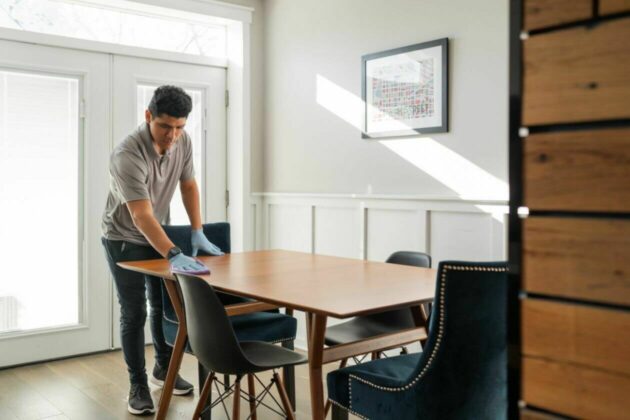
For many remote workers, a messy home is distracting.
You’re getting pulled into meetings, and your unread emails keep ticking up. But you can’t focus because pet hair tumbleweeds keep floating across the floor, your desk has a fine layer of dust and you keep your video off in meetings so no one sees the chaos behind you.
It’s no secret a dirty home is distracting and even adds stress to your life. And who has the energy to clean after work? That’s why it’s smart to enlist the help of professionals, like Well-Paid Maids.
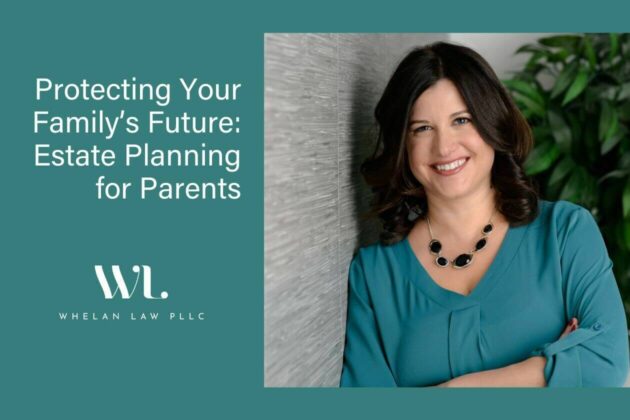
Unlock Peace of Mind for Your Family! Join our FREE Estate Planning Webinar for Parents.
🗓️ Date: April 25, 2024
🕗 Time: 8:00 p.m.
Metropolitan Beer Trail Passport
The Metropolitan Beer Trail free passport links 11 of Washington, DC’s most popular local craft breweries and bars. Starting on April 27 – December 31, 2024, Metropolitan Beer Trail passport holders will earn 100 points when checking in at the
DC Day of Archaeology Festival
The annual DC Day of Archaeology Festival gathers archaeologists from Washington, DC, Maryland, and Virginia together to talk about our local history and heritage. Talk to archaeologists in person and learn more about archaeological science and the past of our


